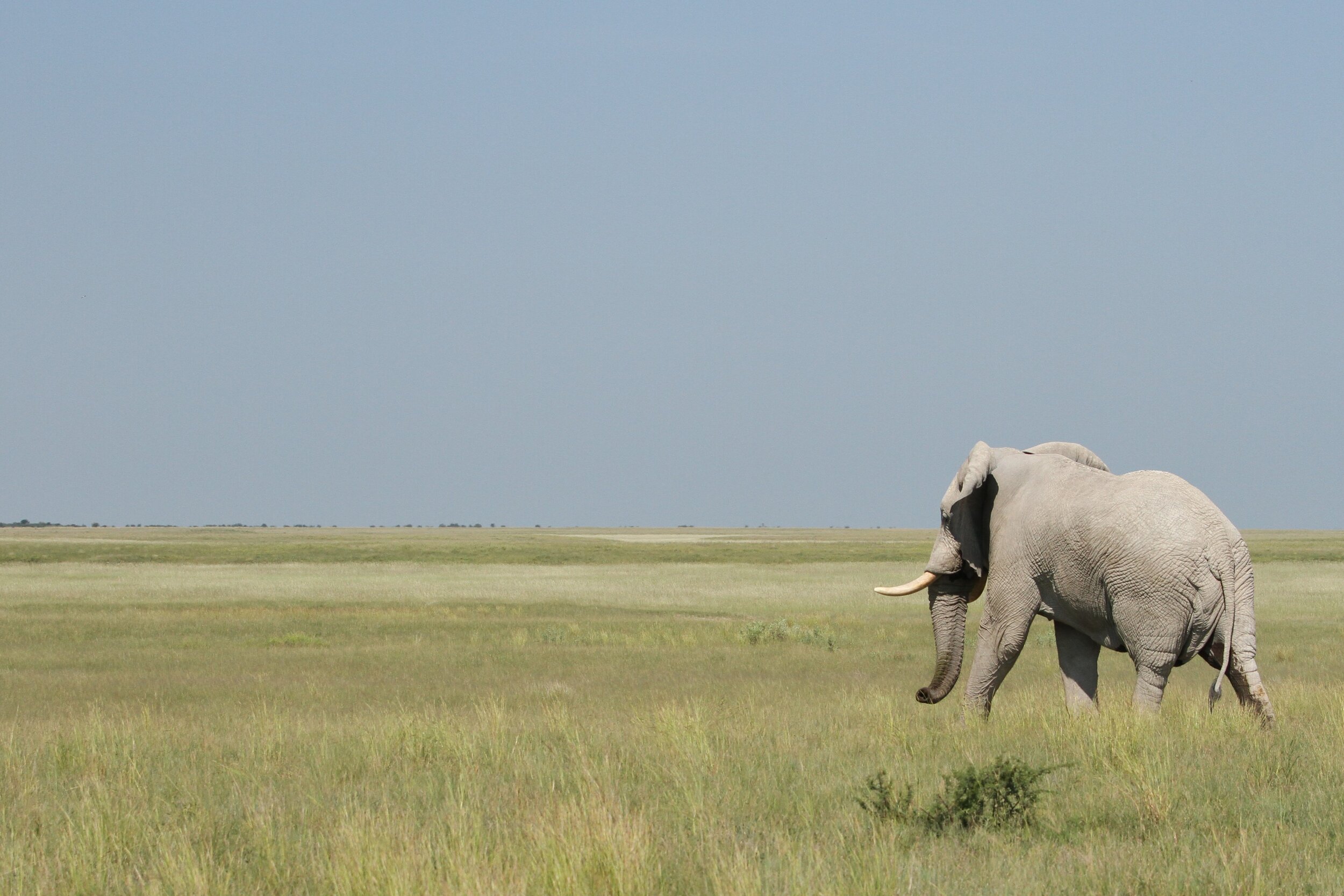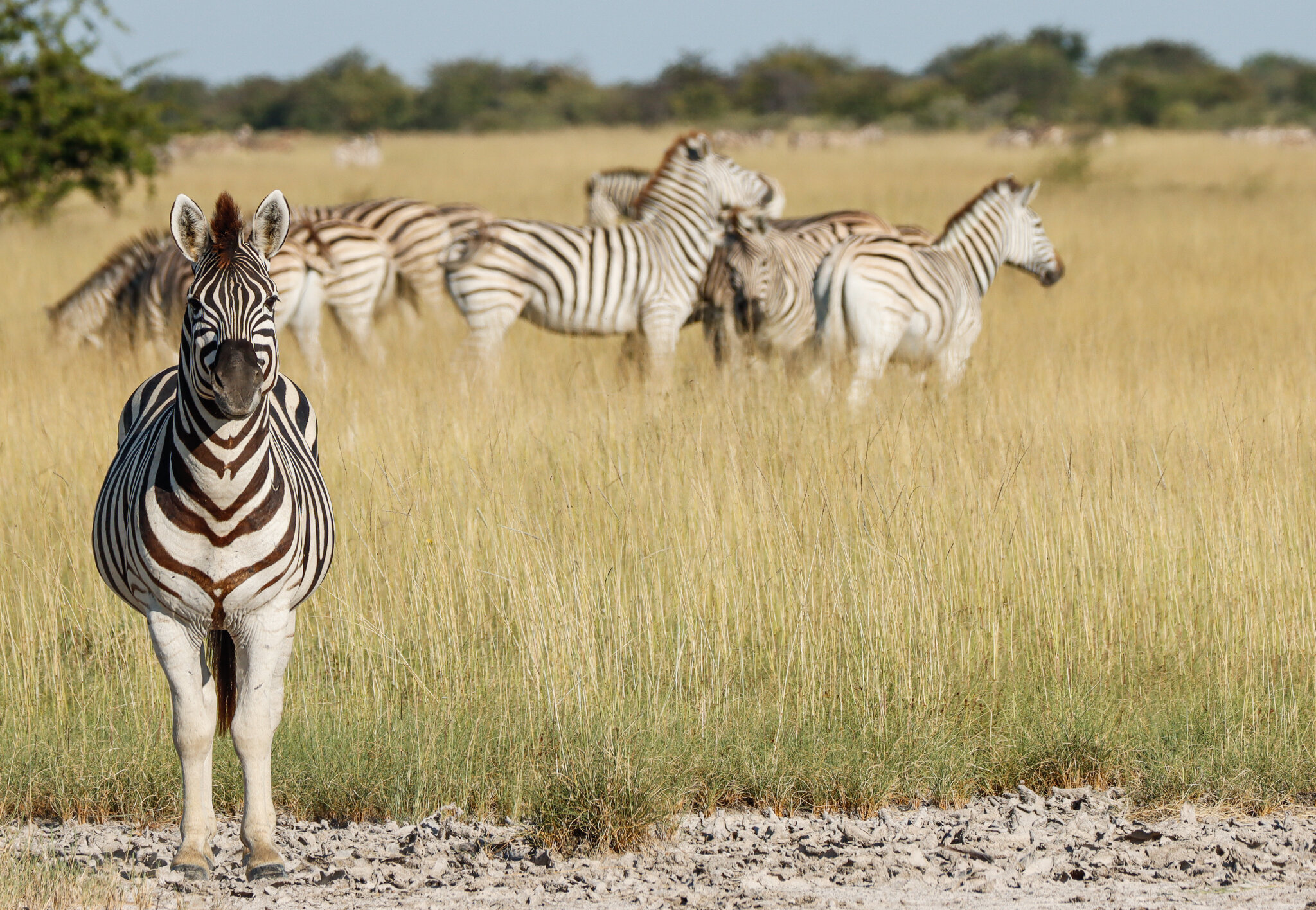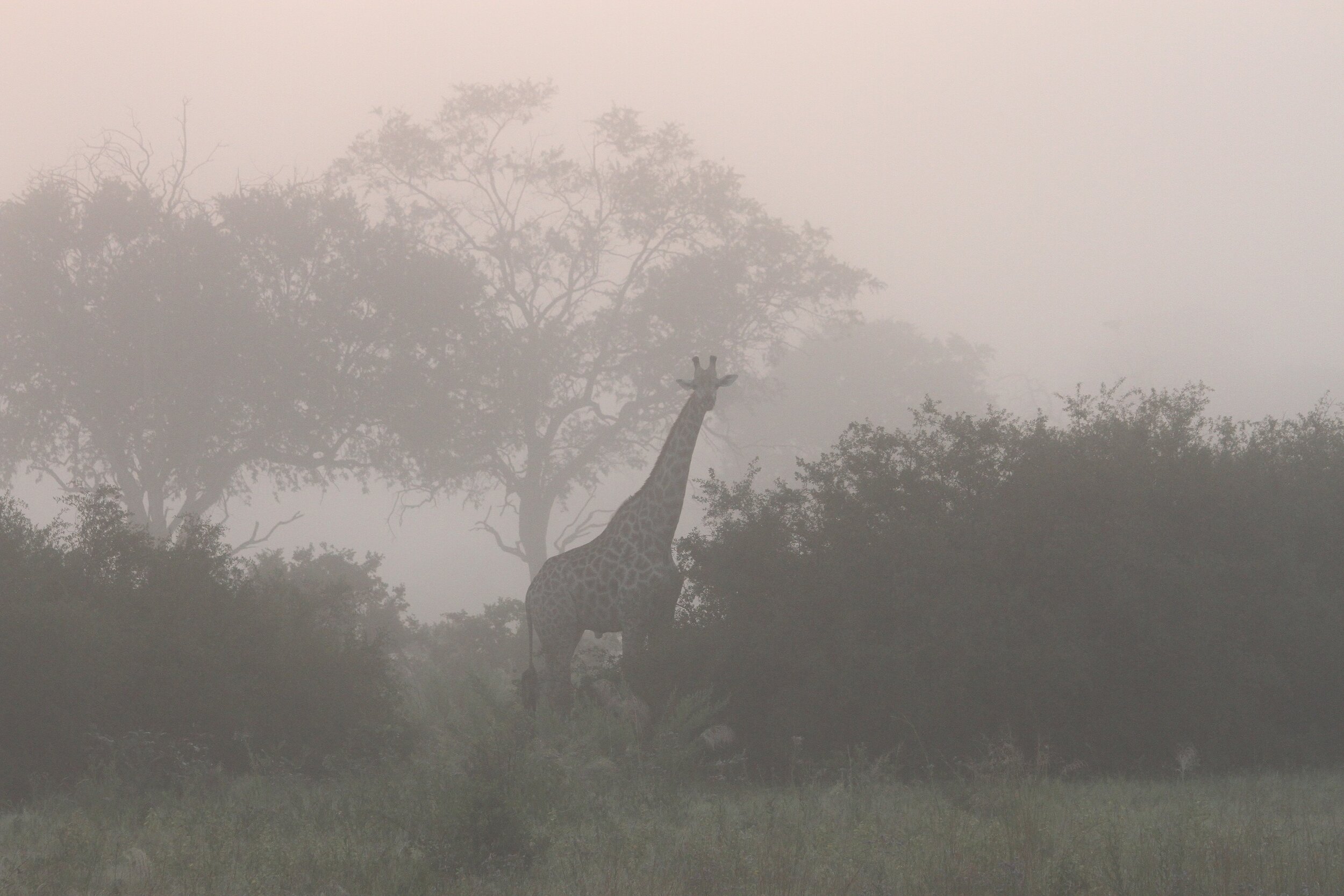
BOTSWANA
Okavango Delta
The Okavango Delta covers 5,800 square miles of pristine wilderness in northern Botswana. It is the largest inland delta in the world. The Okavango is one of the 7 natural wonders of Africa and was listed as a World Heritage Site in 2014. This is one of the top safari destinations anywhere with a full array of species great and small. You can find great wildlife viewing year round whether it’s the height of the dry season or early in the green season. The diversity of flora and fauna is astounding with over 1000 plant species, 500+ birds, 160 mammals, 155 reptiles, and many colorful and interesting invertebrates. And it all relies on the rains that fall in Angola during the green season. This rainwater flows downstream across international boundaries, flooding the delta during the dry season. Without this water, the Okavango Delta would perish. A variety of protected areas can be found within the delta, offering safari travelers many options, though we prefer camps and lodges in the more exclusive and private, community-based reserves. If there’s a specific animal you want to see, chances are you’ll find it in the Delta.
Safari Partner Great Plains Conservation and Natural Selection Travel
Moremi Game Reserve
The Moremi Game Reserve is located within the Okavango Delta and covers 1,900 square miles of prime wildlife habitat. It was formed out of concern that trophy hunting was taking a toll on the wildlife. In 1963, Moremi Game Reserve was created and named after Chief Moremi III of the Batawana tribe. The reserve is one of the busiest safari destinations in Botswana for good reason. It has incredible diversity and healthy populations of most of the animals travelers want to see during a safari. Of particular interest is the African Wild Dog. Critically endangered in Africa, the Okavango Delta and the many protected areas within it provide excellent opportunities to see this amazing species. There are a number of camps and lodges within the reserve as well as campsites for those venturing out on their own. Since this is a national reserve, there is no off-road travel allowed nor are walking safaris or night drives. This is done to minimize disturbance and impacts to animals and the environment in this busier wildlife sanctuary.
Khwai Private Reserve
Khwai Private Reserve is 495,000 acres of the best predator viewing in Botswana. Lion, leopard, hyena, cheetah, and African Wild Dog are commonly seen here. Tucked between the protected areas of the Moremi Game Reserve and Chobe National Park, Khwai Private Reserve used to be a hunting concession. Wildlife populations are now flourishing across a landscape of flooded channels, grasslands, mopane forests, and floodplains. Our preferred Botswana partner, Natural Selection Travel, is the only safari company with just 5 small camps in this vast area. Khwai was formed as a community-based conservation initiative where local people directly benefit from tourism. This model has proven vital towards preserving a sustainable future for people and wildlife in Botswana and across Africa. These type of protected areas limit the amount of camps and people in order to minimize disturbance to wildlife while also allowing for other activities such as walking, off-road access to wildlife sightings, night drives, and mokoro canoe trips.
Central Kalahari Game Reserve
Over 20,000 square miles, this is the 2nd largest game reserve in the world. It was created in 1961 to protect the San Bushmen and their culture, the oldest culture in the world, dating back over 100,000 years. Unfortunately, most were relocated off the reserve for a variety of reasons, including the discovery of diamonds and to protect wildlife from hunting. Though First Light Safaris is opposed to trophy hunting, we support the San Bushmen in their attempt to reclaim their lifestyle inside the reserve while also maintaining healthy populations of wildlife. Many desert-adapted species of wildlife are found here, including the brown hyena and gemsbok. The reserve is famous for huge, black-maned lions, considered the largest of the lions in Africa. The best time to visit this area is during the green season from December to March when the landscape is lush and green.
Nxai Pan National Park
Bordering Makgadikgadi Pan NP to the north, Nxai Pan covers 1,000 square miles of desert wilderness. The word Nxai comes from the stick, “Nxa”, the native San Bushmen used to dig out springhares. From December to March, this area is teaming with giant herds of zebra and other wildlife that come to the area during the green season to take advantage of a bounty of lush vegetation of the two dominant pans, Nxai and Kudiakam. The area is also home to the famed trees called the Baines Baobabs. These massive trees, over 1,000 years old and over 60 feet high, seem to jump out of nowhere in the middle of this vast landscape. Huge elephants, giraffe, a variety of antelope, lion, cheetah, ostrich, and more are best seen during the green season.
Makgadikgadi Pan NP
The Makgadikgadi is a massive area in Botswana that covers over 6,000 square miles of stark, desert landscape. An ancient Lake, Lake Makgadikgadi, the size of Switzerland, dried up tens of thousands of years ago, leaving behind the massive salt pans that are found in the region. Archeological remains date back to the stone age where our earliest ancestors walked the earth. Makgadikgadi Pan Natinal Park itself spans more than 1,000 square miles and is home to a variety of species. Large herds of zebra and wildebeest converge on the area for the lush grasses during the green season as well as large flocks of flamingos and pelicans that migrate to the water-filled pans. Lion, cheetah, bat-eared foxes, brown hyena, springbok, and the famous colonies of meerkats are found here too. The Boteti River, at the west end of the park, provides a vital water source during the dry season.
Chobe National Park
Chobe is Botswana’s first national park, and third largest at 4,500 square miles. Chobe is part of a massive ecosystem covering an area that has tremendous biodiversity and his home to over 100,000 elephants. Additionally there are healthy populations of lion, leopard, wild dog, many different antelopes, hippo, hyena, giraffe, zebra, hundreds of different birds, massive crocodiles, and so much more.
The Chobe River forms part of the northern boundary and it is common to see 100’s of elephants in the river during the dry season. The Savute Marsh is another hotspot for tourism and it is where lions became known for their success in hunting elephants. Chobe being a busier national park, off-road driving to get to a wildlife sighting is prohibited as are night drives and walking safaris. This park is “busy” by our standards, but we know where you can go to get away from the crowds.
Selinda Wildlife Reserve
The Selinda Spillway has become a vital link to the Okavango Delta to the west and to the Linyanti Marshes to the east. For the 30 years leading up to 2009, the spillway was dry. Since then, It is theorized that geological changes underground has allowed for the floodwaters of the Delta to flow east through the spillway, thus transforming the landscape into a haven for wildlife. In some years, the water levels may be higher in the Chobe region, thus changing the flow of water to the west.
Many of the animals found in the Delta region or the Chobe region are now found in or transit through Selinda. The beauty of Selinda is that very few camps operate in this 300,000 acre private reserve. This gentle, meandering ribbon of water flows through open grasslands, shady riverine forests, and wildlife rich lagoons such as the beautiful Zibidianja Lagoon before emptying into the Linyanti and Chobe rivers. The dry season is the best time to visit Selinda.
Linyanti/Kwando Reserves
Linyanti and Kwando form to combine 800,000 acres of wildlife rich habitat. In addition to the 300,000 acres of the Selinda Reserve, this huge area provides a critical link between the massive Okavango Delta and expansive Chobe National Park, thus creating one of the largest and wildest regions left anywhere on the planet with a biodiversity of life like no other. The wildlife viewing is exceptional and rivals that of any other safari destination across Africa.
Safaris here are only possible because of community based conservation. The villages and communities throughout this region benefit from non-hunting tourism dollars. Additionally, a limited number of camps and lodges are permitted to operate in these areas, thus limiting the amount of tourists and disturbance to wildlife and the fragile ecosystem. The camps and lodges also hire over 90% of their staff from the local communities. Without local support, this biodiverse wilderness would disappear.








